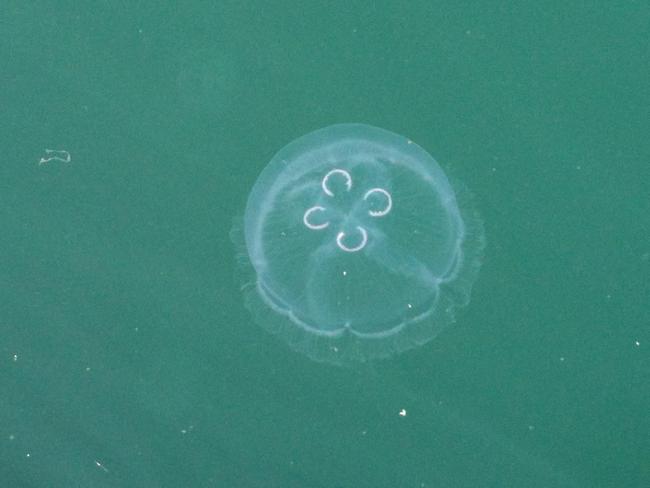Talking Point: Jellyfish bloom fear as salmon farming grows
LISA-ANN GERSHWIN and DAIN BOLWELL: We need more data before continuing

Opinion
Don't miss out on the headlines from Opinion. Followed categories will be added to My News.
We congratulate Christine Coughanowr on her compelling article calling for the precautionary principle to be exercised with regard to salmon farm expansion in Storm Bay (Talking Point, May 14).
In addition to the salmon farms causing toxic algal blooms and heavy metal re-suspension mentioned in her article, jellyfish are also part of the issue.
A jellyfish-caused fish kill in November, plus knock-on mortalities from gill disease over the following months, reportedly cost Huon Aquaculture up to $18 million.
The scant data available suggest that moon jellies and other species have increased substantially in areas of salmon farming operations, leading us to strongly suspect that salmon farming is making this problem worse.
There are two main impacts of jellyfish.
First, jellyfish mucus and stinging cells are inhaled into the gills, suffocating the fish, such as occurred in November. The surviving fish often develop gill disease from their stings, resulting in many more deaths. Fish kills like this have happened before but this was the largest, and they appear to be increasing in frequency and duration, with substantial financial effects. The impact on other species and industries in the affected waterways hasn’t yet been calculated.
Second, fish-farm net cleaning rips apart jellyfish polyp colonies, with each fragment capable of seeding a new colony, which then later bud large numbers of jellyfish. Moreover, the mechanical action of cleaning stimulates polyps to grow more vigorously.
Contrary to popular belief, expansion into the more turbulent waters of Storm Bay is unlikely to alleviate either problem, because the infrastructure of the farms will essentially act like islands, providing ideal habitat for jellyfish and their polyps.
Many millions of taxpayers’ dollars are to be funnelled into the new ‘blue economy’ aquaculture Cooperative Research Centre — and this is a good thing! — but without baseline data and environmental impact research prior to aquaculture expansion, neither the sustainability of the industry or the legacy impact on the ecosystem can be credibly ascertained.
Given current data, there is every reason to expect that the jellyfish problem will only get worse under the current business model of expansion and increased stocking density. While shareholders and insurers may feel concern about future stock losses, our concern is with the contamination and ecosystem dysfunction that the salmon expansion is likely to create. We taxpayers are subsidising both the industry’s massive profits and its probable shameful legacy. This industry and its expansion have effectively privatised much of our waterways. It is time for much closer and transparent public oversight to avoid further calamity.
Research scientist Dr Lisa-ann Gershwin is director of the Australian Marine Stinger Advisory Services and a former CSIRO scientist. Books include Stung! On Jellyfish Blooms and the Future of the Ocean.
Dr Dain Bolwell is author of Governing Technology in the Quest for Sustainability on Earth. He has worked in France, Cambodia, East Africa, West Africa, China and Kiribati.


